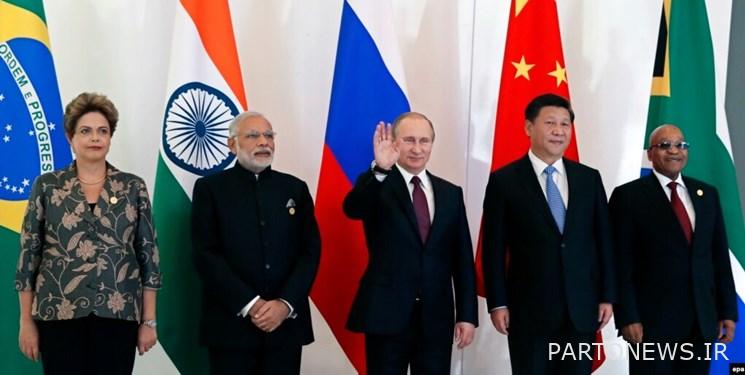Russia’s special measures to defeat the dominance of the dollar by relying on national currencies

According to Fars News Agency’s economic correspondent, “sanctions” are one of the options for Western countries to put pressure on countries to change their political behavior in the international system, so that any political, economic, social, etc. movement that threatens the interests of Western countries. Kand is immediately targeted and economically attacked using the tool of sanctions.
From the very first days of the revolution, the use of sanctions against Iran was on the agenda of Western countries, but in the last decade, with the changes that have been made in this instrument, its intelligence and efficiency have increased significantly.
In the face of the US and EU smart sanctions system, the Iranian people in 1992 chose the path of negotiation and concession to lift the sanctions, the results of which can be judged after 8 years of the government of prudence and hope.
In the meantime, there are other experiences in the face of the sanctions system in different countries, one of which is the experience of Russia and the path that the government and the people of this country have chosen and taken to counter the US sanctions.
After the start of the Russian military operation in Ukraine, the question arose in the public mind that Why are US and EU sanctions against Russia ineffective? To answer this question, we must go back a little and look at the actions of the Russian government in the first encounter with smart sanctions during the conflict with Ukraine over Crimea in 2014.
In a previous report entitled «Turning to the East and Regionalism are the two approaches of the Russians in the face of Western sanctionsRussia’s foreign trade approach was changed; In this report, we examine the Russian version of how to resolve the banking embargo and bypass Swift restrictions.
* Attempt to remove Swift and use the internal transaction system
According to the Tehran Economic Policy Institute, the Central Bank of Russia in 2014 began serious steps to create a parallel payment platform Swift. The bank set up a “financial messaging system” called the SPFS. The SPFS system transmits financial messages without the need for Swift and has the ability to transmit 50 types of financial messages. The Russian payment system is set up by CyberFT.
To date, more than 420 major Russian banks have been connected to the country’s domestic messengers, and Russian officials have now provided the conditions for foreign banks to join the system. Currently, 109 banks from Russia, Kazakhstan, Kyrgyzstan, Uzbekistan and Tajikistan are directly involved in CyberFT’s financial information network.
More than 200 other banks from Belarus and Azerbaijan have also announced their readiness to use CyberFT financial messaging platforms and are in the process of joining it.
* Development of bilateral monetary agreement and strengthening of secure bilateral banking channels
In the monetary-banking field, and in response to Western threats of Russian banking sanctions, the country’s central bank has sought to develop a bilateral monetary pact and, in general, to “de-dollarize” VTB Bank (Russia’s second-largest financial institution) as a factor in It chose to trade with China, and the People’s Bank of China introduced a commercial bank (Bank of China) to Russia to manage large-scale transactions between the two countries based on local currencies.
Since the launch of the interstate settlement system, trade between Russia and China, based on local currencies, has grown by more than 700 percent. Figure 1 shows the increase in the use of local currencies (rubles and yuan) in exports and imports of the two countries at the height of the sanctions years.
Figure 1
In this regard, according to statistics released by the Central Bank and the Federal Customs Service of Russia, the share of the dollar in trade between Russia and China in the first quarter of 2020 reached a record low of 46 percent. During this period, the total volume of foreign trade between the two countries was $ 25.35 billion.
This is the first time in history that the US currency accounts for less than half of the foreign exchange settlements between the Russian Federation and the People’s Republic of China. Meanwhile, the share of the euro in exchanges between the two countries was 30% and the share of local currencies was 24%.
In 2018, another plan was launched to launch a new cross-border system for direct payments in national currencies. Negotiations were held so that the two countries could use China’s UnionPay credit card in Russia and Russia’s Mir card in China.
* Russia’s decision to expand the ruble-yuan system with the Chinese
The growing importance of Russia-China economic relations is also reflected in the yuan’s growing share of the Bank of Russia’s international reserves. According to statistics, the Chinese yuan in the foreign exchange reserves of the Central Bank of Russia increased from 2.8% of total foreign exchange reserves (equivalent to 12 billion US dollars) at the end of 2017 to 5.5% (equivalent to 23 billion US dollars) at the end of 2018. This happened during the process of diversification of foreign exchange reserves and de-dollarization of Russian assets. In Figure 2, this increase is significant.
Figure 2
Earlier, Moscow and Beijing signed an agreement to use national currencies in bilateral trade, as well as to increase interbank settlements by up to 50 percent, which is on the agenda in an effort to move away from the US dollar.
Following the agreement, the parties will use Swift, a national payment and settlement system, including SPFS and CIPS, to exclude Swift in their trade transactions. In this regard, the Russian SPFS messenger and the Chinese international interbank payment system CIPS will be connected. .
* Russia’s condition for the ruble to pay for gas imports by Europeans
Other measures taken by Russia to reduce the share of the dollar and the euro in its international trade were to ask the European Union to pay part of the gas imports in rubles. In order for the EU to be able to pay the ruble, it must export to Russia and receive the ruble in return; Then (with the name of the member states of the union and kept in Russian banks in rubles) pay the cost of imported gas through Russian commercial banks. The move strengthened the ruble’s position in the European Union and made it an important international currency.
* The use of national currencies in interactions with the BRICS Group and the Eurasian Economic Union
Russia and its BRICS allies have also backed plans to establish an international anti-sanctions payment system. Creating an alternative payment system to Swift is one of the special programs on the agenda of the President of Russia; Vladimir Putin seeks the internationalization of the Russian Financial Messaging System (SPFS). Plans to link the payment systems of the BRICS countries have now been approved by the group’s trade council.
According to Kryl Dimitrov, head of the Russian Direct Investment Fund, the increase in non-market risks arising from the international payment infrastructure is the rationale behind the plan to integrate into the group’s national payment systems. According to him, an efficient payment system for BRICS members can encourage payments in national currencies and ensure the formation of a payment path and sustainable investment between countries.
In 2019, according to the Central Bank of Russia, SPFS’s share of Russian financial communications in the two years leading up to 2019 reached 15% of Swift’s share of these communications. Eurasian Economic Union Bank access is now also connected to the SPFS.
According to Dimitrov, the dollar’s share of Russia’s foreign trade payments has fallen from 92 percent in the past few years to 50 percent, while the ruble has risen from 3 percent to 14 percent.
Russia is building the infrastructure to use national currencies in payments between Eurasian Economic Union member states. As a result, more than 70 percent of payments between Russia and members of the Eurasian Economic Union are now made in rubles.
Russia also uses national currencies in its military dealings with India. Due to the Katsa sanctions that came into force in 2018, India had difficulty paying Russia to buy military equipment. In this regard, in a joint meeting of military officials of India and Russia, it was suggested that the two countries make their payments in national currencies and in rupees and rubles. For example, a $ 5 billion contract was signed between Russia and India for five categories of S-400 air defense systems in rubles.
End of message /

